News

Key Takeaways
- Acting Chair Travis Hill indicated that the FDIC is moving toward formal clarity on how blockchain-based banking products intersect with long-standing depositor protections
- Hill reportedly announced the agency is also working on a regime for stablecoin issuance
Reports have emerged hinting that the U.S. Federal Deposit Insurance Corporation is preparing to outline how deposit insurance might apply in a tokenized environment, as the agency’s acting chair signaled new guidance and a potential application track for stablecoin issuers before the end of the year.
Speaking at the Federal Reserve Bank of Philadelphia’s fintech conference on Thursday, Acting Chair Travis Hill indicated that the FDIC is moving toward formal clarity on how blockchain-based banking products intersect with long-standing depositor protections. His remarks come at a moment when the spread of fintech payment apps and wallet services has tested consumer assumptions about what counts as an insured deposit.
Regulators have repeatedly warned that users often presume insurance coverage extends automatically to digital-only platforms. Pass-through protection does exist, but only under specific conditions, and officials have voiced unease about firms that fail to spell out those limits. The concern has grown as more companies experiment with tokenized accounts, synthetic dollars, and other blockchain-integrated financial services.
Hill suggested that the core legal principle should remain unchanged, even if the technology shifts. “My view for a long time has been that a deposit is a deposit. Moving a deposit from a traditional-finance world to a blockchain or distributed-ledger world shouldn’t change the legal nature of it,” he said, according to Bloomberg.
Behind the policy debate is the Deposit Insurance Fund, the pool that backstops insured accounts when banks collapse. The fund’s reserve ratio slipped below its statutory level after the pandemic-era spike in deposits, forcing the agency to gradually rebuild its buffers. Earlier projections show the DIF returning to its target by late 2025—three years sooner than initially assumed—thanks to steady assessment revenue from insured banks.
The broader push for guidance reflects a surge of interest in real-world asset tokenization across global finance. Excluding stablecoins, tokenized Treasurys and private credit instruments crossed $24 billion in value in the first half of 2025, as per data from RedStone. Asset managers have rushed to claim territory: BlackRock’s BUIDL fund, introduced last year, quickly became one of the dominant products in the space.

Key Takeaways
- According to the AFP, cybercriminals gained unauthorized access to personal information and used them to lodge fake complaints through Australia’s official cybercrime reporting platform, ReportCyber.
- AFP Detective Superintendent Marie Andersson said the fraudsters were using tactics that closely mimic legitimate law enforcement procedures, lending more credibility
Crypto scammers have taken their schemes to a new level by impersonating Australian police officers and abusing official government systems to coerce victims into giving up their digital assets, the Australian Federal Police (AFP) said Thursday.
According to the AFP-led Joint Policing Cybercrime Coordination Centre (JPC3), cybercriminals gained unauthorized access to personal information—such as phone numbers and email addresses—and used them to lodge fake complaints through Australia’s official cybercrime reporting platform, ReportCyber.
Once the reports were submitted, the scammers contacted their targets, pretending to be AFP officers. They instructed victims to check the reports through legitimate government websites, creating the illusion of authenticity and trust.
In one reported case, a target received a call from someone claiming to be with the AFP, saying that a person had been arrested in connection with a data breach involving cryptocurrency and finance. The caller told the victim that their details had surfaced during the investigation and that a representative from a crypto company would be in touch to “verify” their information.
The second caller then attempted to convince the victim to move funds from their platform wallet to a different wallet supposedly for “security reasons.” The AFP said the victim fortunately became suspicious and ended the call before transferring any funds.
AFP Detective Superintendent Marie Andersson said the fraudsters were using tactics that closely mimic legitimate law enforcement procedures, lending more credibility to the scam. She said the scammers falsely claimed that victims were named in investigations related to crypto breaches.
Further, she stated that the latest example was part of a broader trend in scams becoming increasingly sophisticated. Warning users, she said, “Also bear in mind legitimate law enforcement officials will never request access to your cryptocurrency accounts, wallets, bank accounts, cryptocurrency wallet seed phrases, or any personal information relating to your financial accounts.”
She advised Australians to remain alert when contacted about cybercrime reports they did not file. “If you’re contacted by someone about a ReportCyber report you didn’t lodge or authorize, terminate the call and notify ReportCyber,” Andersson added.
The development comes a month after Australian police said that it had cracked a coded crypto wallet backup containing USD 5.9 million.

BNB is trading around $975, reflecting recent pressure after slipping below the $1,000 threshold. The token continues to carry significant ecosystem utility, but near-term sentiment is challenged by broader market weakness and increased selling pressure.
BNB Coin Next Target
- Price: $975
- Market Cap: (based on circulating supply)
- 24-Hour Trading Volume: $770million
- Circulating Supply: 139 million BNB
- Total / Max Supply: Uncapped
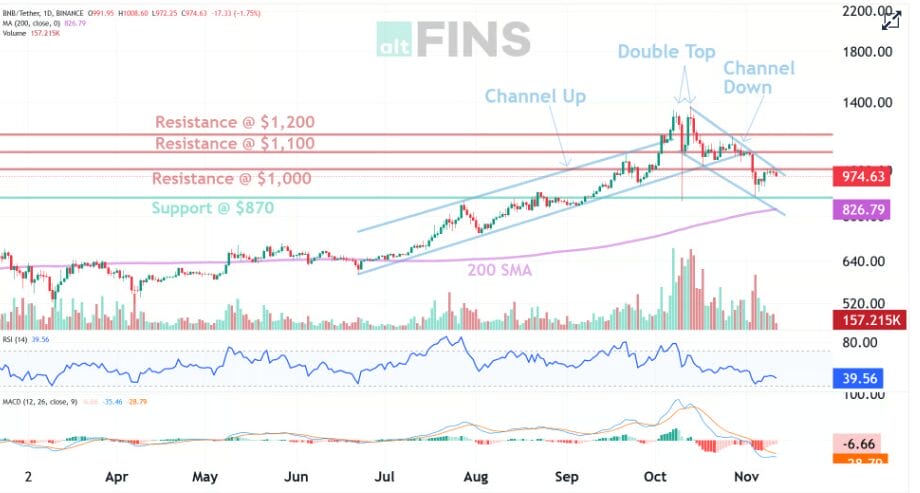
Price got rejected twice at $1,336 resistance level (ATH), forming a Double Top, and subsequently has broken below the $1,000 key level. It dipped to support level is at $870, which is also the low point of the flash crash on Oct 10th, and bounced up. It’s trading in a Channel Down pattern, which typically resolves in a bullish breakout and a trend reversal.
We wait for such a breakout, ideally above $1,000, with +10% to 20% potential upside to $1,100 to $1,200 thereafter.
Key Indicators & Market Signals
- BNB has broken below key support at $1,000 and is testing strong support around $970.
- Resistance is now forming near $1,008–$1,020; clearing this zone is important to regain upside momentum.
- The price drop suggests large-scale selling and weakening sentiment—volume on the breakdown appears elevated.
- Long-term utility remains, but near-term price action is driven heavily by short-term sentiment and macro risk factors.
Latest News Highlights
- BNB slipped below $1,000 amid intensified selling pressure, marking a technical breakdown in the near term.
- Analysts point out that despite strong ecosystem fundamentals, BNB’s recent performance is hampered by market sentiment and rotation away from large-cap tokens.
- The BNB Chain continues to expand its ecosystem, but near-term catalysts to drive a rebound appear limited.
Summary
BNB is trading around $975, having broken below support near $1,000 and testing $970 as its next strong floor. Resistance lies near $1,008–$1,020. Until BNB clears resistance and recovers, price risk remains tilted to the downside.
With its utility and ecosystem advantages, BNB retains long-term appeal—but near-term traders may face more volatility and less upward momentum.
For on-demand analysis of any cryptocurrency, join our Telegram channel.

Bitcoin is trading near $106,030, having rebounded from a weekend retest of the $99,000 support zone.
The market remains cautious and range-bound, with macro uncertainty and institutional positioning playing a key role in near-term action.
For on-demand analysis of any cryptocurrency, join our Telegram channel.
Bitcoin Next Target
- Price: $106,030
- Circulating Supply: 19.9 million BTC
- Max / Total Supply: 21 million BTC
- Market Cap & Volume:$2trillion, $70billion
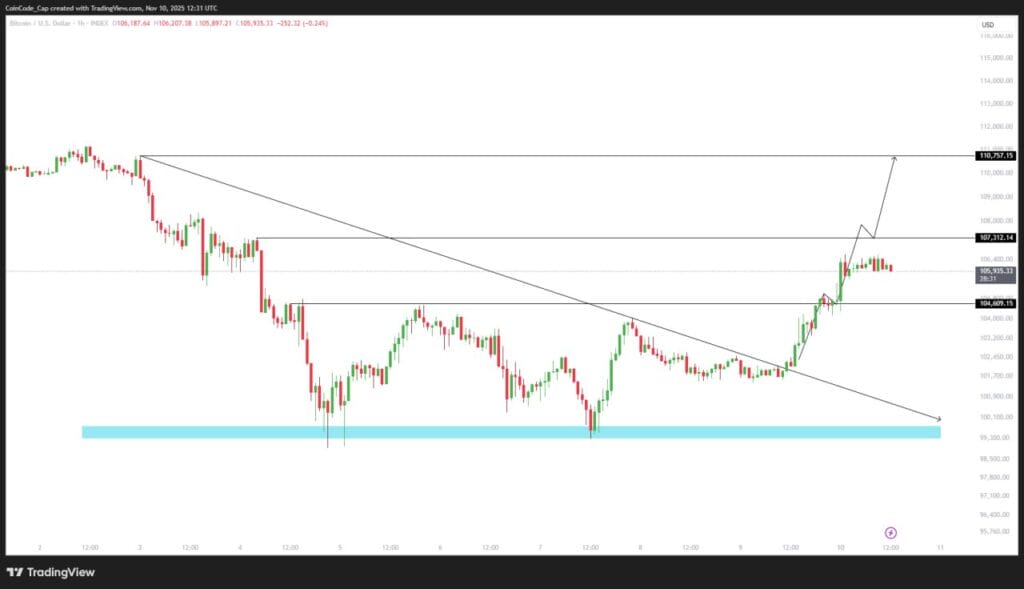
After price made a new ATH of $126k, it crashed four days later (flash crash on Oct 10th) as low as $102K. It’s now also broken below $107K support and 200 SMA, which could signal a bearish trend reversal to Downtrend.
The next robust support is around $100K – $102K, which was the low point of the recent flash crash on Oct 10th.
It’s trading in a Falling Wedge pattern, which typically resolves in a bullish breakout and a trend reversal. We wait for such a breakout, ideally above $110K (200 SMA), with +10% potential upside to $120K (PT1) or $125K (PT2) thereafter. Long-term, we believe that the FED is likely to continue to cut interest rates in the next 3 months by 50 bps or more, which should be bullish for BTC and altcoins.
Key Indicators & Market Signals
- Strong support was found around $99,000, and reclaiming above $105,000–$106,000 is important for bullish structure.
- Resistance lies near $110,000–$112,000; a clean break above could open a potential move toward $120,000+.
- The rebound followed heavy deleveraging and large-scale liquidations, leaving Bitcoin in a reset phase with potential upside once conditions stabilize.
- Macro factors such as interest-rate expectations, regulatory clarity, and institutional flows remain dominant influences.
Latest News Highlights
- Analysts at one major bank argued that following major deleveraging, Bitcoin now has significant upside potential and is more attractive than gold on a volatility-adjusted basis.
- Over the weekend, BTC retraced toward the ~$99,000 support level before rebounding, underscoring the importance of that floor for market structure.
- Sentiment remains cautious, with many traders awaiting clearer macro signals before committing to new long positions.
Summary
Bitcoin sits near $106,030, held above critical support around $99,000 and testing resistance near $110,000–$112,000. A strong breakout above resistance could propel price toward $120,000+, while a failure to hold support may open downside toward $95,000–$100,000.
With institutional interest still present but macro risks elevated, BTC appears to be in a consolidation phase ahead of its next directional move.
For on-demand analysis of any cryptocurrency, join our Telegram channel.
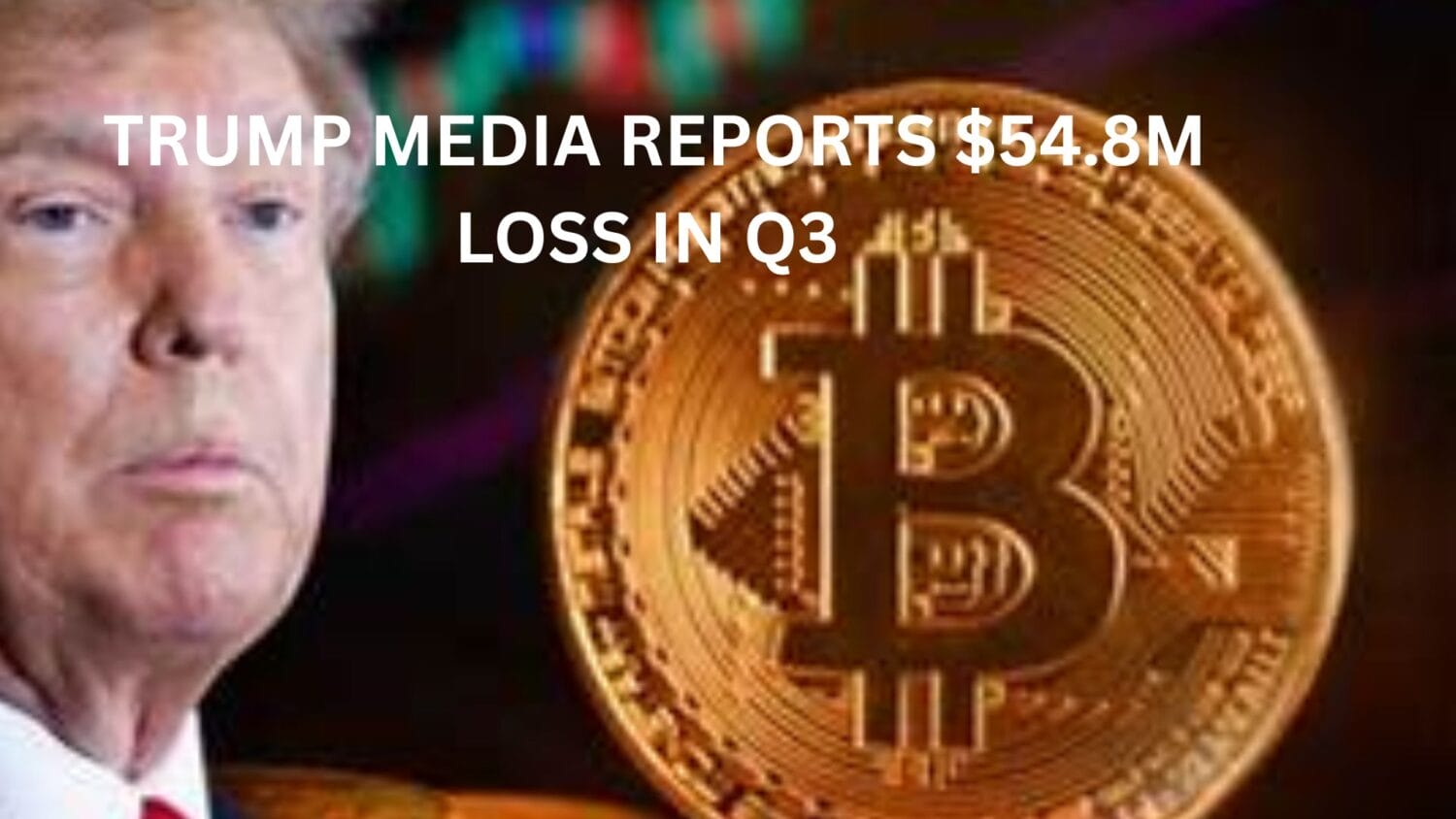
Key Takeaways
- The firm generated $15.3 million in realized income from Bitcoin options and posted $33 million in unrealized gains from holding more than 746 million Cronos
- Trump Media and Technology Group (TMTG), the operator of Truth Social, reported a net loss of $54.8 million in the third quarter, widening from $19.3 million a year earlier.
In a significant development, Trump Media and Technology Group (TMTG), the operator of Truth Social, reported a net loss of $54.8 million in the third quarter, widening from $19.3 million a year earlier. The company said rising costs offset gains from its Bitcoin and Cronos holdings.
Revenue fell to $972,900, compared with just over $1 million during the same period last year. Shares of Trump Media (DJT) closed Friday at $13.10, down 1.73%, before edging slightly higher after hours to $13.20.
TMTG reported holding 11,542 Bitcoin as of September 30. The company first announced its Bitcoin investment strategy in late July, saying it was designed to protect the firm from what it described as “harassment and discriminatory treatment” by banks and financial intermediaries.
The firm generated $15.3 million in realized income from Bitcoin options and posted $33 million in unrealized gains from holding more than 746 million Cronos (CRO), the native token of the Cronos blockchain. At the end of September, CRO traded around $0.18.
Trump Media established Trump Media Group CRO Strategy Inc. earlier this year with Crypto.com and Yorkville Acquisition Corp. The new entity aims to become the largest publicly traded CRO treasury company by market capitalization. It is expected to acquire up to $1 billion in Cronos, equivalent to more than 6.3 trillion tokens, according to the company’s Q3 report.
The partnership will also introduce a new rewards feature for Truth Social and Truth+ users, allowing subscribers to earn and convert “Truth gems” into CRO via Crypto.com’s wallet network.
In a statement, CEO Devin Nunes said the third quarter was “crucial to Trump Media’s expansion plans,” citing the company’s “massive Bitcoin treasury” and growing platforms.
He added that with its financial assets climbing from $274 million in March 2024 to $3.1 billion as of September 30, the company is positioned to act on its mergers and acquisitions strategy. “We’re well-poised to act on our M&A strategy by acquiring one or more of the crown jewel assets we’re evaluating,” Nunes said.
Despite these developments, Trump Media’s stock has dropped 61% year-to-date, reflecting investor concerns.

Shiba Inu is trading near $0.000010, continuing its extended phase of low volatility.
Despite the large token supply and meme-coin nature, SHIB remains relevant thanks to its community, token burns, and ecosystem updates. However, near-term upside appears limited without fresh catalysts.
Shiba Inu Next Target
- Price: $0.000010
- Market Cap: $7.3 billion
- 24-Hour Trading Volume: $800mn
- Circulating Supply: 589 trillion SHIB
- Total / Max Supply: 589.55 trillion SHIB
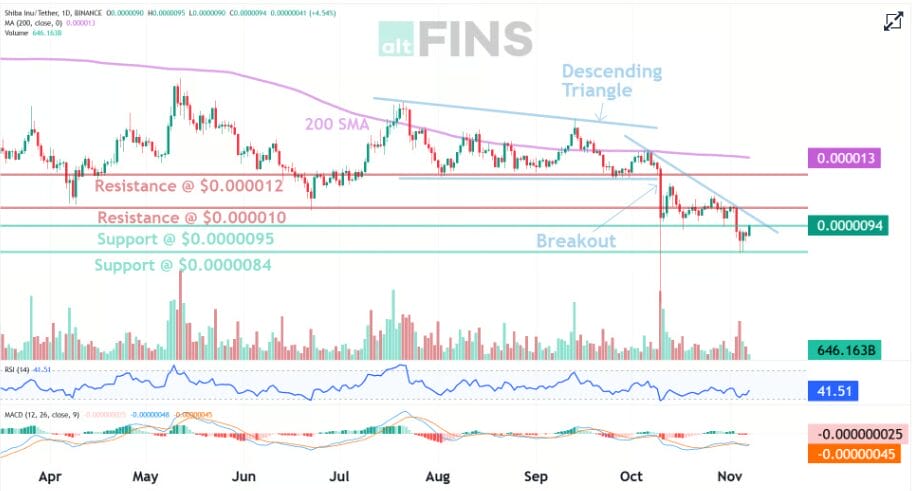
Following a bearish breakout from Descending Triangle, below 200 SMA, price signaled resumption of downtrend. It has bounced up off of $0.0000084 support and could reach $0.000010. However, overall, it remains firmly in a downtrend.
Key Indicators & Market Signals
- SHIB is trading beneath resistance around $0.0000113; a meaningful breakout above could offer short-term momentum.
- Support appears near $0.0000097–$0.0000100; failure to hold could see price drift lower toward $0.0000090 or below.
- On-chain metrics show large token holdings (whales) and steady burn activity—positive for longer-term potential but with delayed impact.
- Compared with earlier meme-coin cycles, SHIB’s upside is constrained by its massive supply and competition from newer tokens.
Latest News Highlights
- Analysts highlight that SHIB’s burn rate has surged, but price remains stagnant—indicating that tokenomics alone aren’t driving breakout performance yet.
- Many SHIB holders are rotating into newer, utility-driven meme projects, reducing speculative capital inflows into SHIB.
- While the community remains active and loyal, broader investor attention is shifting toward tokens with clearer utility and growth narratives.
Summary
Shiba Inu is trading near $0.000010, with support around $0.0000097 and resistance near $0.0000113. Without a fresh catalyst or shift in sentiment, SHIB’s near-term upside looks muted.
Investors should monitor burn events, whale accumulation, and ecosystem updates closely—any positive change could reignite interest, while further delays may lead to sideways or downward movement.
For on-demand analysis of any cryptocurrency, join our Telegram channel.

Avalanche is trading around $16.16, continuing to operate in a prolonged consolidation phase amid weak momentum and mixed market sentiment.
The token’s large-scale utility in subnet architecture and DeFi remains intact, but near-term price action reflects broader crypto weakness.
For on-demand analysis of any cryptocurrency, join our Telegram channel.
AVAX Crypto Next Target
- Price: $16.16
- Market Cap: $7.4bn
- 24-Hour Trading Volume: $870mn
- Circulating Supply: 460mn
- Total / Max Supply: (720 million AVAX)
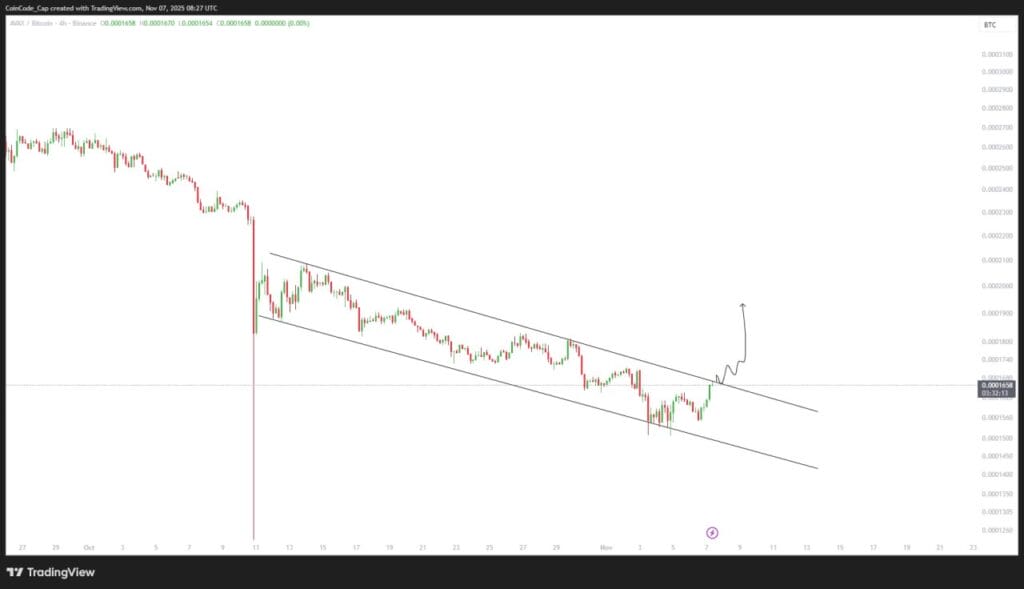
Breakout is expected soon.
Key Indicators & Market Signals
- Resistance is visible near $18.00–$19.00; a break above this could hint at renewed interest.
- Support appears to lie around $15.50–$16.00; a drop below may lead to a test of $14.00–$15.00.
- On-chain usage and subnet deployments remain steady, but require stronger catalyst for price breakout.
- Volume and momentum are weak in the short term, suggesting limited upside without external triggers.
Latest News Highlights
- Avalanche’s ecosystem continues to develop, with strategic fundraising and token purchase vehicles planned by the foundation—supporting long-term token thesis.
- Analysts are pointing out that AVAX underperforms relative to some competing layer-1s, which could pressure price if adoption doesn’t accelerate.
- The current consolidation is being framed by some market participants as a “sleeper phase” before a potential breakout—provided broader crypto macro conditions improve.
Summary
AVAX trades near $16.16. Key support lies at $15.50–$16.00, and resistance around $18.00–$19.00. A breakout above resistance could bring upside toward $20+, while failure to hold support could lead to a pullback toward $14.00–$15.00. With its strong infrastructure and ecosystem fundamentals, Avalanche remains one to watch—though near-term action is likely to be range-bound until a fresh catalyst emerges.
For on-demand analysis of any cryptocurrency, join our Telegram channel.